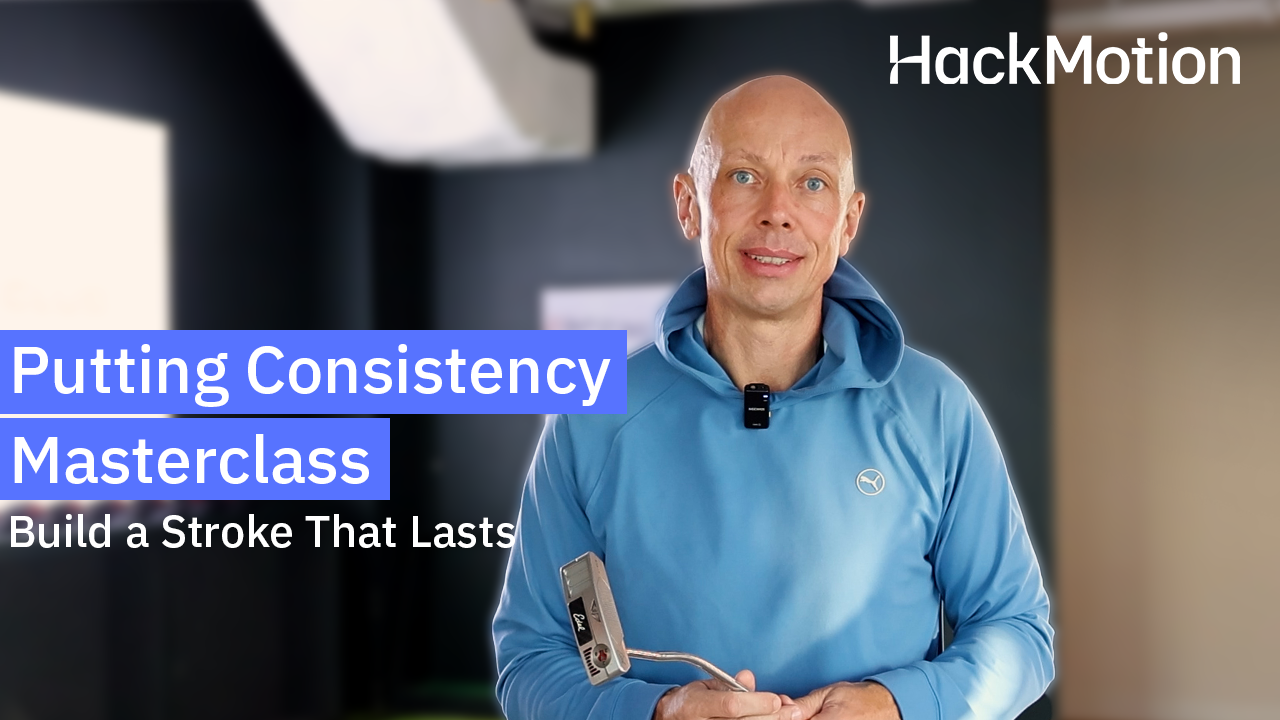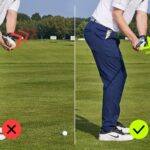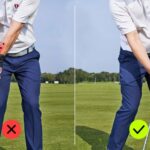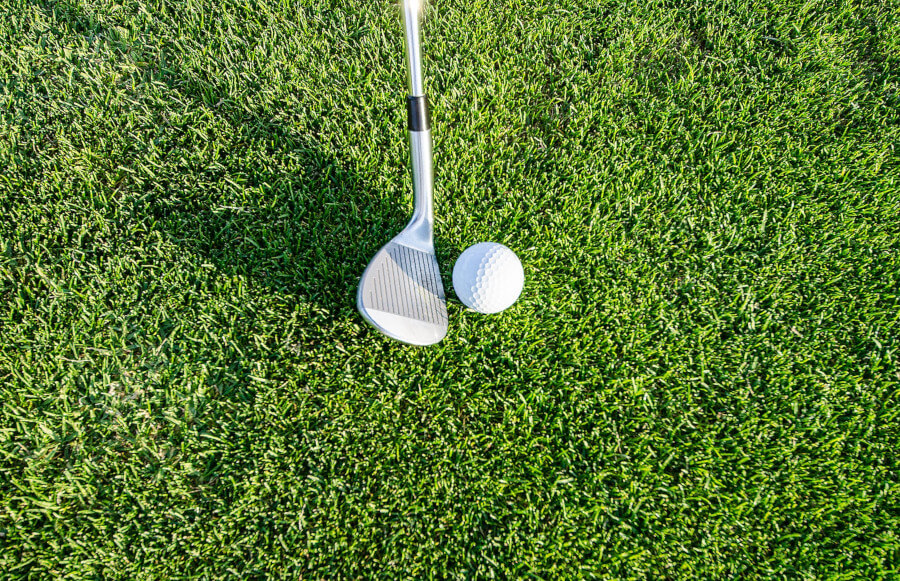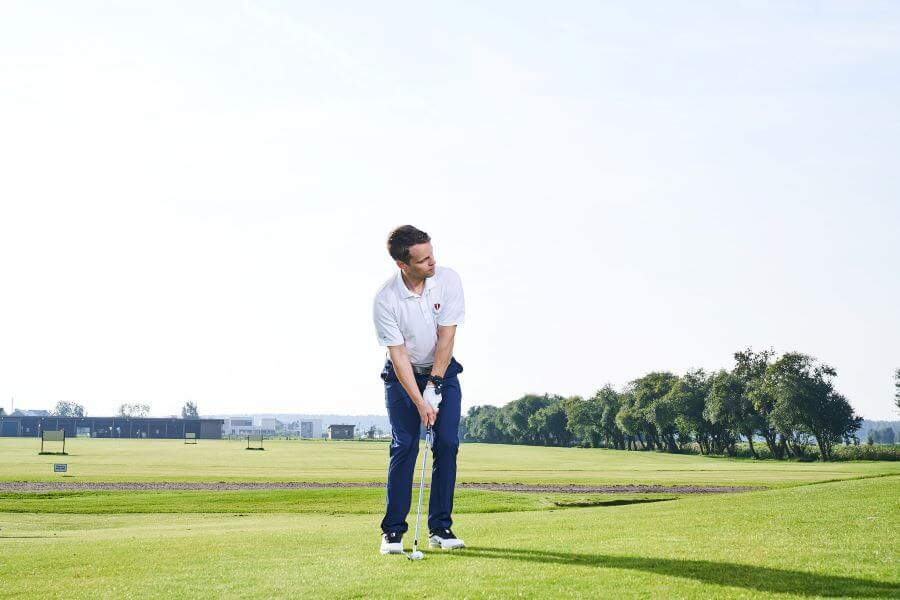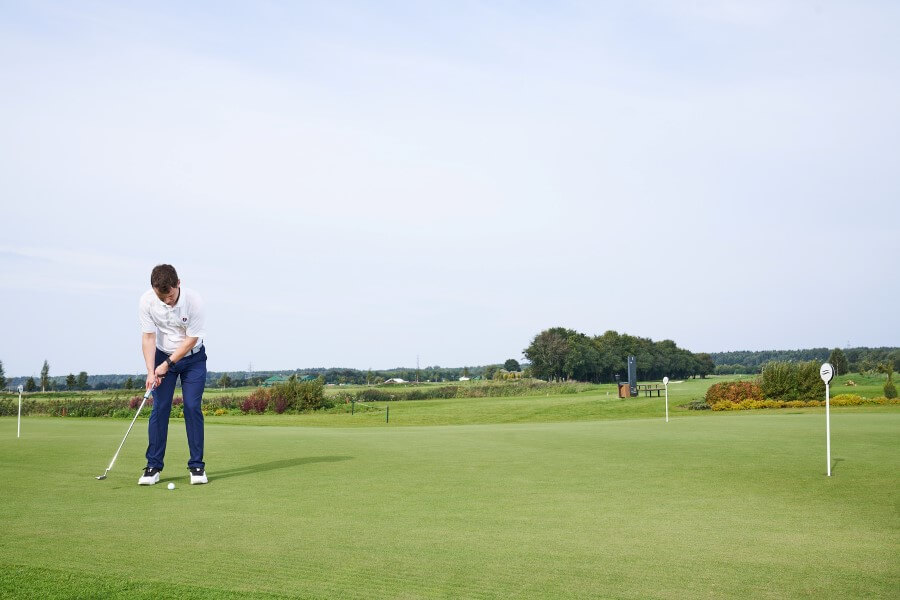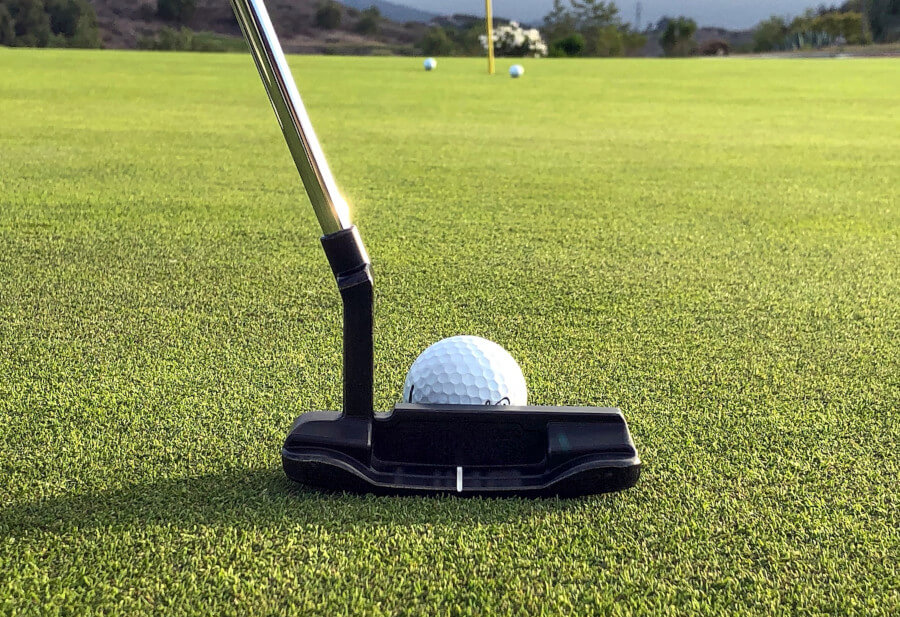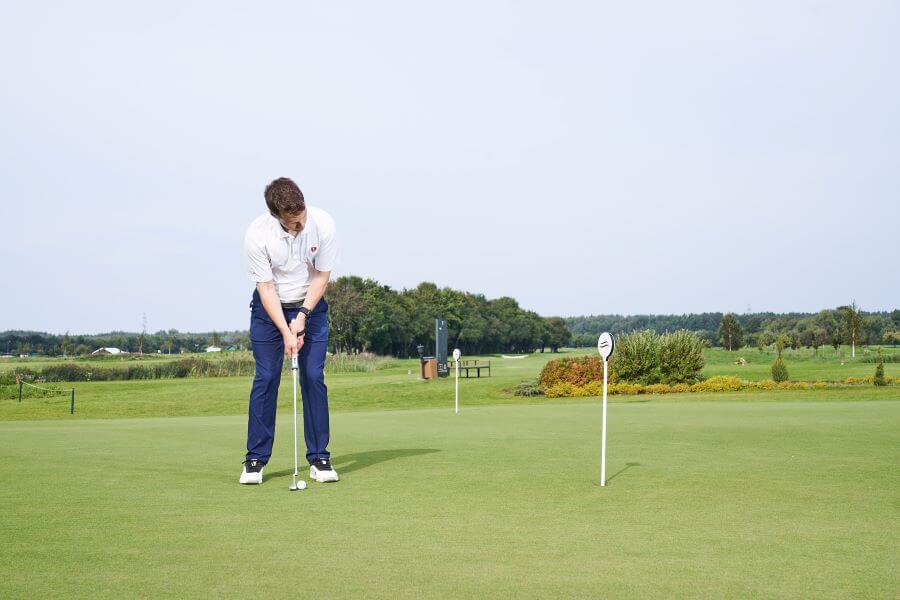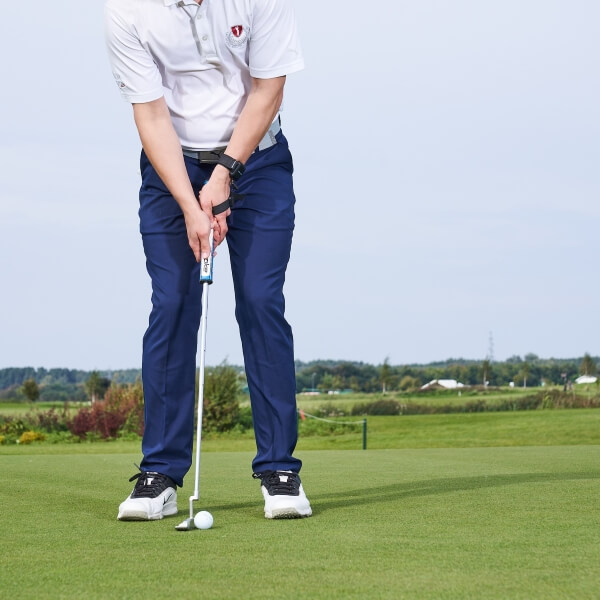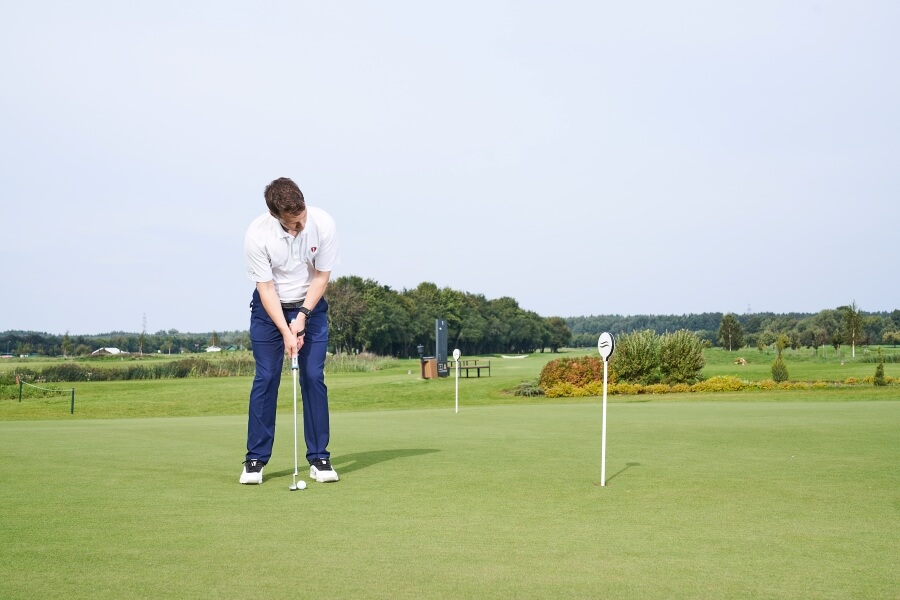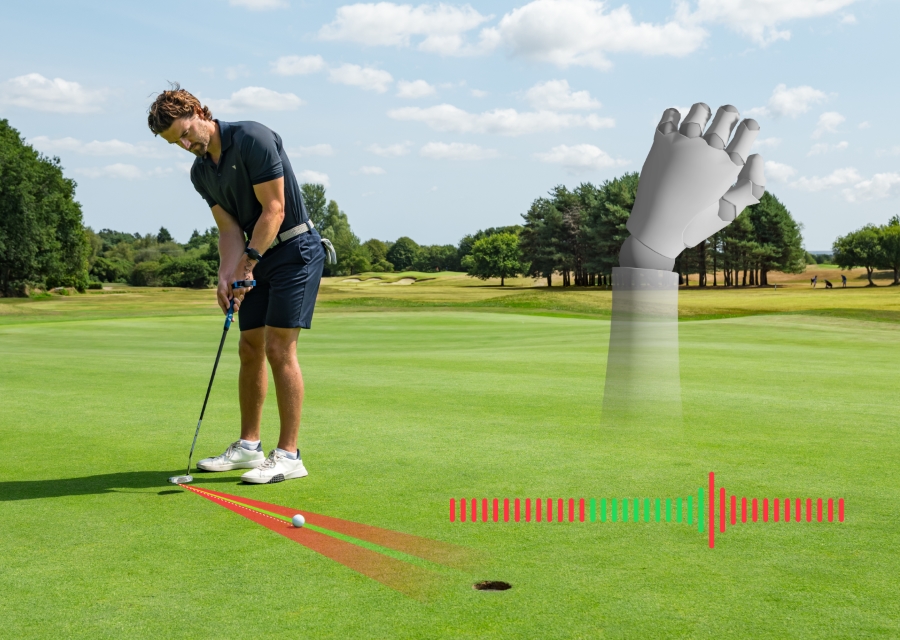How to Control Putting Distance: 6 Tips to Give You Consistent Distance Control on Any Putting Surface
Old teaching professionals will tell you there are three aspects to successful putting: the line, the weight, and the weight. This is their way of telling us how important it is to get the right putting distance.
If you have control over your putting distance, then you limit the number of three-putts while also increasing the number of made putts. Green speeds vary significantly from course to course, so being able to adjust your distance is crucial to shooting your best scores.
If you’re not already aware of these pro tips, then I encourage you to adopt them right away. Use the drills to ensure you’re implementing them properly and watch your scores lower quicker than you think.
Putting Distance Control (Key Takeaways)
If you need a quick overview of how to control the distance of your putts, review these key takeaways below.
- Produce an equal length backswing and follow-through.
- Create the feeling of tossing or bowling the ball to the hole with your bottom hand.
- Limit or optimize wrist movement for consistent strokes.
- Use visualization to help your body adapt to each putt independently.
- Use consistent tempo on all putts to gauge speed from one green to the next.
- Always read putts from behind the hole to know how the last three feet will affect your ball’s speed.
Contents
6 Tips to Control Your Putting Distance
These tips are easy to implement into your next round. You’ll benefit more if you get some practice in, but controlling your distance is not about mechanics as much as it is about understanding the theory of good putting.
Equal Backswing & Follow-Through
Measuring your swing and being aware of how far back you draw the putter compared to how far you follow through is the first step to controlling your distance.
Inconsistent strokes are a huge fault for amateur and intermediate golfers.
Having an equal backswing and follow-through is the goal, but if you’re going to miss, err on the side of having a longer follow-through than backswing. This ensures you will accelerate through the ball, which helps keep a square face and clean contact.
Even on short and fast putts, your putter should never decelerate through impact. And monitoring your backswing and follow-through length will help you control this.
“Toss the Ball”
Putting is more about feel than mechanics, and that is a difficult concept for some people to grasp.
Those with a technical background will likely struggle with this part of the game. But it’s also what makes golf so unique. To have a well-rounded game, you must be able to balance mechanics with feel.
If you were to toss a wrapper into a garbage bin that was a few feet away, you would scoff and shrug it off as an easy task. If you missed, you wouldn’t dissect your form and analyze where your weight was, how your elbow was flexed, or if your grip was optimized.
Putting is similar in that you just need to see the target and let your instincts take over.
To tap into this, before you hit the ball, imagine what kind of strength it would take to roll the ball in the hole with your hand, as if you were bowling. Once you’re comfortable, transfer that energy and feeling into the putter head through your grip with your lower hand.
- Set up over the ball and let your lower hand hang loose.
- Imagine tossing the ball with that hand without moving any other part of your body.
- When ready, re-grip your putter and recreate the same feeling during your putting stroke.
Optimize Wrist Angles and Usage
Your wrist action in putting can make or break a solid putting stroke when controlling distance. Once you’ve learned how to optimize wrist movements and positions in the full swing, it’s easy to misinterpret that information when you have the putter in your hand.
Using Hackmotion helps golfers of all levels use their wrists effectively. Extending and flexing is ok in small amounts, but eliminating radial movement is paramount.
These tiny differences are hard to see with the naked eye, which is why pros hire expensive golf coaches to help them.
Extending and Flexing
In Lehman’s terms, this is how your wrists “flip”. During the putting stroke, we want to see very little of this, but on longer putts, it may be more comfortable for some to control distance.
Hackmotion can help you determine when to engage this.
HackMotion Putting Flexion / Extension Drill
Get a feel for the wrist movement that controls your putter’s loft.
Radial and Ulnar
This is how your wrist “hinges” and is only used during full swings.
There should be no radial or ulnar movement during a putting stroke.
HackMotion Putting Ulnar / Radial Drill
Get a feel of the wrist movement that controls the plane of the putter.
Rotating/Rolling
This movement should also be eliminated from your putting stroke. Not only will it negatively affect your distance control, but it will also make it much more difficult to get putts started on your intended target line.
Visualize the Speed
Tapping into the speed of each putt is a skill that takes time and effort, especially since every putt you face will be different in some way.
The best way to lock into the correct speed is first to visualize how you think the putt will travel.
By visualizing each putt first, you give your body the information it needs to produce a putt that won’t be too short or too long. Depending on the length of the putt, you can break it down into sections.
- Short Putts (under 10 feet) – Divide the length of the putt in half and imagine how fast you want the ball to exit the first half and enter the second half. The last three feet are the most important, so monitoring the speed at this point is critical.
- Medium Length Putts (11 feet – 25 feet) – Divide the length of these putts into thirds and imagine how fast you want the ball to enter and exit each third. This will help you gauge how hard to strike the ball so that it enters the final third of the putt at the desired speed.
- Long Putts (26+ feet) – Divide these putts into fourths and apply the same strategy. Don’t divide putts into more than quarters to keep the process simple.
Focus on Tempo
Rather than thinking about how hard a putt should be struck, direct your thoughts to thinking about what kind of tempo is needed.
This works for all the different kinds of putts you’ll face. Whether it’s a short, slippery downhiller or a long uphill, into the grain putt, if you focus your attention on the tempo rather than the strength, you’ll have a better chance of matching the speed and controlling the distance.
Hackmotion sensors are designed to learn your optimal tempo and alert you when you stroke outside of that. This is a revolutionary technology that mimics what a putting instructor would tell you if they were right beside you.
The system also recommends putting stroke tips that are specifically tailored to your results, so you only practice what you need to work on.
Read Putts From Behind the Hole
The ultimate goal of controlling the distance on your putts is so that when the ball approaches the hole, it has the best chance of going in. Therefore, you should always study each putt from behind the hole to learn how the putt will break once the ball reaches it.
This is especially important on medium to long putts since trying to judge the speed from more than 15 feet away is not accurate.
Walking up to the hole and seeing it from different angles gives your body the information it needs to come up with a stroke that will match the putt.
- Start behind your ball and determine how many sections you are dividing your putt (half, thirds, or fourths).
- Walk to the hole along the high side to determine the apex.
- Stand behind the hole and visualize the speed of your putt as it enters the final section.
- Walk back to your ball on the low side and visualize the speed throughout the other sections.
Drills to Practice Your Putting Distance
Even though controlling your putting distance is a feel part of the game, there are ways to improve it.
Use these drills to tap into your putting instinct and learn how to control distance on any speed greens.
Train smarter at home—putting, short game, and full swing. Start with these putting drills to practice at home, then expand your routine with our full guide on how to practice golf at home.
Chopstick & Coin Drill
Use this drill in combination with Hackmotion, but you can also just use an elastic to secure the chopstick. The point is to eliminate radial movement in the wrist and prevent added movement that may make controlling the distance unpredictable.
With the Hackmotion, you can monitor wrist movement as well as tempo to get a good feel for how your putting stroke should flow through impact.
- Video Timestamp: 1:21-7:22
Chopstick & Coin Drill – Step by Step:
- Secure a chopstick or pencil along your wrist bone on top of your thumb and up to your lower forearm.
- Insert a coin at the bottom so it’s secure but not tight.
- Make your putting strokes so the coin does not fall out.
Heads Up Putting
This drill can be used in conjunction with your pre-shot routine to give you a better feel for any and all putts. It allows your body to react instinctively to each putt without being too mechanical.
Many pros use this during their practice and pre-shot routine. You can even take it a step further and hit putts while looking at the target, but this is suggested for practice only.
- Video Timestamp: 5:51-10:48
Heads Up Putting Drill – Step by Step:
- Address a putt for practice strokes next to your ball with your normal stance, but with your head turned towards the target so you can clearly see it.
- Take strokes while looking at the target and try to match your tempo to the putt at hand.
- During practice, hit some putts while looking at the target. If this is working for you, then test it out on the course. There’s no rule that says you have to look at the ball when putting.
Colorful Tee Drill
Using different colored tees or different denominations of coins, you can develop a system that you can reference while on the course. This is an excellent drill for more mechanical players, as it allows you to match a swing with a feel.
You can even add more checkpoints if you like, but don’t add more than a couple because this is meant to create a good feel for distance and not be a foolproof way of controlling it. It helps you adapt.
Colorful Tee Drill – Step by Step:
- Insert two blue tees on either side of the ball, one six inches ahead, and one six inches behind. Next, insert two yellow tees six inches behind the blue tees and then two white tees six inches behind the yellow.
- Your stroke for short putts should match the blue tees, your stroke for medium putts should match the yellow, and your stroke for long putts should match the white tees.
- Measure the distance of your putts and adjust the tee positions based on your level of comfort.
- Blue tees should be for a putt between 6-10 feet, yellow for 11-20, and white for 21-30 feet.
Blindfolded Putting
This takes the head-up putting drill to the next level. It’s the ultimate drill for giving yourself the right feel and distance control on any length putt.
Simply line up a ball for a putt you need the most work on, and apply the blindfold.
This eliminates all the mechanics of the stroke, allowing you to tap into your natural instincts. This drill is strictly for practice and is great for when you’re playing a new course for the first time.
Blindfolded Putting Drill – Step by Step:
- Line up your ball to a hole and take a few practice strokes.
- When you’re ready, put on a blindfold and strike the putt.
- You can line up three balls and peek under the blindfold to ensure you’re lined up correctly.
- Don’t look at the results until you’ve hit all three balls.
- Use different color balls to identify which was the first, second, and third putt.
Final Thoughts
Having control of the distance of your putts will significantly increase your chances of making them and will reduce the chances of three-putting.
Weight is what most pros work on the most, as it is the hardest to gain consistency over. Using the tips and drills above puts you ahead of most amateurs.
Using Hackmotion with all the drills and tips above will give you instant feedback on your successes and failures. It will save you time and effort, so your practice time is used efficiently and produces results fast.
